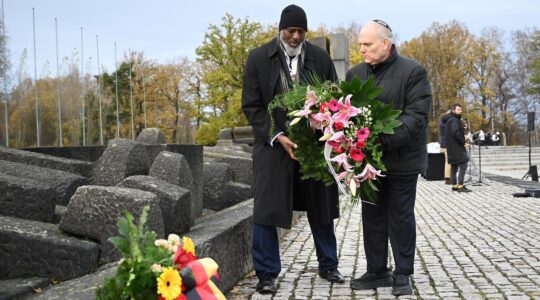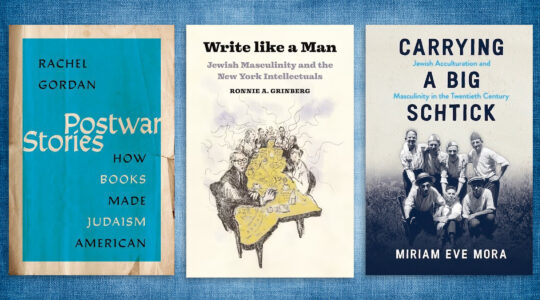A quiet revolution is taking place in the second generation of women’s Torah study. Originally women’s Talmud learning was modeled after the male yeshiva: students were detached from the surrounding world and were expected to confine themselves to the Beit Midrash in order to achieve a total absorption into the world of Torah. There was also methodological aping: analyses that required a thumb stirring the air and intellectual hair splitting of the Talmudic topics dominated. Phrases like "bitul Torah" (waste of “Torah time”) could be heard while "little sleep, little conversation, little levity" was the borrowed credo of the women scholars.
The goal of the first generation of women scholars was to raise a generation of women “Torah giants” who could study Talmud and rabbinic commentaries, make halachic rulings and who would take their place among the best Torah scholars of the yeshiva world. The first women midrashot (seminaries) facilitated women’s learning parallel to men’s studies, and this investment has paid off: women now hold senior positions in Torah education.
I am a product of this vision, yet I belong to a different generation. My approach to teaching women at Beit Morasha of Jerusalem’s Beren College is different. Yes, our scholars are required to cover three pages of Talmud each week; the shiurim (classes) require in-depth explorations of the topics and commentaries, and our program demands extraordinary effort. Yet our Beit Midrash (study hall) is no female clone of the yeshiva. Rather than reflect the male yeshiva, our Beit Midrash reflects life itself.
Internal and external challenges inject excitement to our learning and enrich it continually: one student considers the question of work on Shabbat through classical texts, but also through comparisons with Escherian art; another student discusses the authority of the Kohen Gadol using legal tools and terminology; yet another uses the philosophy of Jacques Derrida to analyze the significance of the act of giving a get (bill of divorce).
Our in-depth studies grapple with ideas and events outside of the beit midrash and help us build a worldview to understand life itself—and vice versa. Studying Tractate Shabbat impacts our personal experience of Shabbat; we apply Talmudic discussions of "shlichut" (agency) to a couple’s Sabbath shopping list. In our learning, someone detaching herself from life in order to devote herself to Torah study loses a significant element of the religious study itself. Even the weekend paper invites new insights of the subject we learn. Our study is serious and demanding, requiring deep involvement with life, just as it requires deep involvement in Torah learning. Our studies enrich and awaken us; it gives new life to the Torah and fulfilling the promise that Torah holds for us. Like its predecessor, our Torah study is connected to experiencing God, and includes the joy, the inner peace and the humility that comes from facing the Infinite.
This study that is connected to, and nurtured by, life is more appropriate for women than the learning that rules the male Torah world. I am not claiming a new "feminine learning" with clearly defined characteristics, only that our learning style allows women to learn Torah more comfortably, with fewer conflicts and tensions. The entire world of Torah is changing. The sway of analytical Talmud study is diminishing and new forms of study are flourishing in its stead—and it is clear that women are partners in formulating this new path in Torah study.
Watch and Wait
There is an added perspective on the attitudes of the Torah world to women’s learning. Not only are the contents and the learning system different from the earlier model, but the direction and the destination have also changed. While the previous generation of women Torah learners set clear predefined objectives, our approach is characterized by tranquility and the natural flow it engenders. We allow Torah study to proceed from a peaceful state of mind rather than to establish it as life’s work. While our Beit Midrash has vision, study principles and calls to action, it is “a slow cooker” that develops long-term processes and reaches out in numerous unforeseen directions.
At one of our recent conferences, a student asked me why there weren’t more women speakers. I responded that our process requires patience, that I am in no hurry. Things move and change. If you are despairing or frustrated, you miss the beautiful blossoming occurring before our eyes. You do not experience the miraculous expansion of Torah study and the infinite variety of voices within it.
I am like Moses’ mother, Miriam, "watching from afar to see what would become of him." Miriam stands behind the reeds, knowing that something is going to occur, just not how God will bring the redemption. All this is happening before my eyes: I listen and speak, challenge and kindle every spark that I encounter along the way. When I recently sensed the need to reach for greater heights and start a women’s Halacha program, we established it at Beit Morasha of Jerusalem. We did this not because of a feminist demand for women poskot (decisors), but because there were women who thirsted for this program in order to build a more complete Torah world for themselves. And with God’s help, there will be poskot, because the world needs them.
The Difficulties
We hear the difficult questions that our generation faces in our Beit Midrash, whether they are social, religious, theological, philosophical. Problems like marrying at a late age, changes in the Jewish family, the confusion emerging from the dissonance between the image of Torah educated women and the image of women found in the writings of the Talmudic sages and later rabbis. At times we are filled with hope that we can enrich Halacha in new ways, yet we also see the difficulty that leading rabbis have in including serious women in their ranks. This discourages us and floods us with enormous pain, but we are revived and encouraged anew by our discoveries in Torah and our supportive students.
Support the New York Jewish Week
Our nonprofit newsroom depends on readers like you. Make a donation now to support independent Jewish journalism in New York.
There are no magic solutions for the issues knocking at the Beit Midrash door. In contrast with the traditional yeshiva model of isolation from the world, however, our worldly awareness softens our experience of facing these issues. Our ongoing dialogue with the world is not just spice for our learning—it is essential and gives our learning vitality and stability. Above all, our faith in the process strengthens us to continue our path, even if we cannot see the end of the road or trace exactly where it will lead us.
Michal Tukochinsky leads the Moshe Green Beit Midrash for Women at Beit Morasha of Jerusalem.
The New York Jewish Week brings you the stories behind the headlines, keeping you connected to Jewish life in New York. Help sustain the reporting you trust by donating today.




